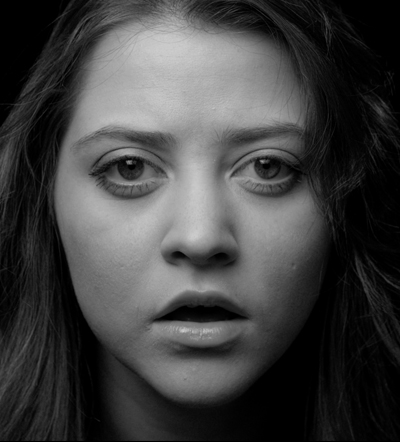
From Godfrey Reggio’s VISITORS. Courtesy of: Cinedigm
Featuring a stream of up-close human faces (and one preternaturally inquisitive gorilla), against a stark black backdrop, Godfrey Reggio’s striking, trancelike new feature is in some sense a continuation of his Qatsi trilogy: Koyaanisqatsi (1982), Powaqqatsi (1988) and Naqoyqatsi (2002). Spearheaded by Reggio, an indisputable cine-poet, in collaboration with the venerable avant-garde composer Philip Glass, it brings to mind the undeniable power of an unremitting gaze.
Glass’s unmistakable score serves as something far beyond the emotional punctuation we’ve come to expect from film music, instead providing a sparring partner to the images that Reggio describes as a kind of dance. “He’s writing a full symphonic score that covers the entire length and breadth of the film; Philip in effect provides the emotive narrative. His music doesn’t illustrate the image while its proceeding on a separate track – its like a dance partner, each partner has to create their own individuality, but together they make the trot, you can’t do one without the other.”
Their collaboration dates back to late-seventies, when Reggio was intent on pursuing the then little-known Glass to score his debut feature, Koyaanisqatsi. “He was a genius in my opinion, but he wasn’t acknowledged or accepted at that point. His music is polyrhythmic, it doesn’t illustrate anything, and it’s totally cinematic, you almost can’t miss how to edit it.




 Facebook
Facebook Permalink
Permalink Digg
Digg Reddit
Reddit LinkedIn
LinkedIn StumbleUpon
StumbleUpon Tumblr
Tumblr

